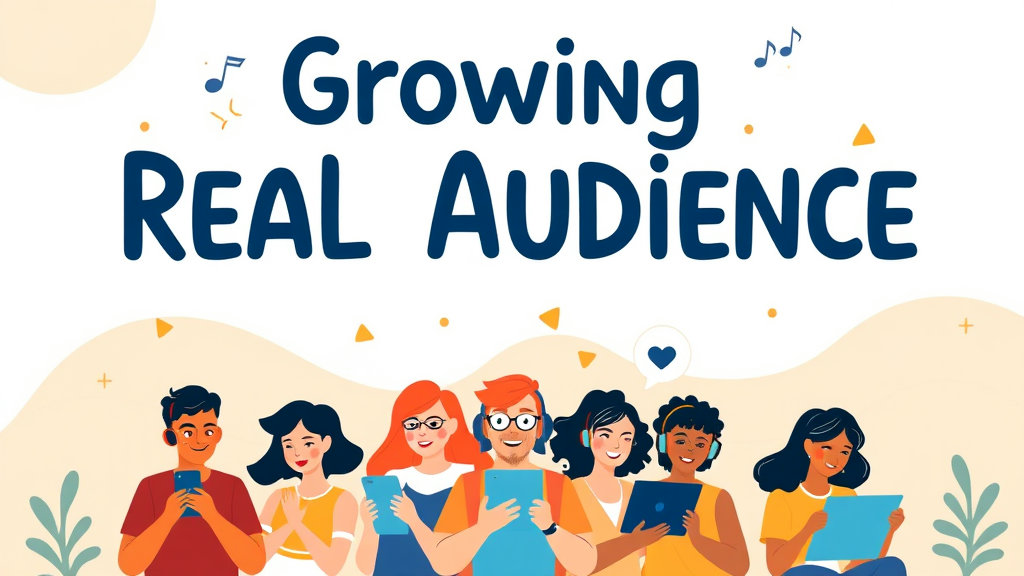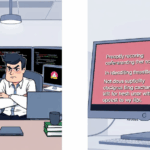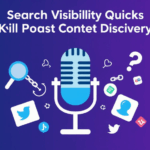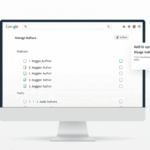Using Podcast Blog Posts to Fuel Real Audience Growth
Embedding Transcripts Helps, But Only If They’re Not Garbage
Look, you can’t just dump a big wall of auto-speech-to-text from your podcast into your blog post and expect Google to care. Especially if it’s riddled with uh’s and AI hallucinated nouns. I learned the hard way one week when I copied a 45-minute transcript straight into my Blogger post, hit publish, and watched it index as if it were lorem ipsum. Zero snippet capture, no uptick in impressions, and Reader View made it look like a NSA debriefing.
What actually worked? Manually cleaning the more quote-worthy segments, formatting them like mini-articles below the embedded player, and linking key phrases naturally — not keyword stuffing, just linking when it made sense. For example, when my guest mentioned Stripe launching a public roadmap, I linked to TechCrunch’s recent coverage instead of forcing a longtail mashup like “stripe roadmap evolution podcast insights”.
Also, if a transcript is over maybe 2,000 tokens or so, and weirdly structured, Google seems to ignore large internal anchors. I noticed this in the HTML preview when Search Console refused to recognize H2s below the fourth one. Something about tag stacking plus malformed list elements apparently confuses the crawler’s jump-to-section links.
The Title Has to Serve Both the Clicker and the Crawler
A lot of us are guilty of formatting blog post titles based on what sounds podcast-y. That whole “Big Ideas From Last Week’s Episode” thing does absolutely nothing for organic. It performs about as well as untitled Twitch replays. On the flip side, writing keyword-forward titles that feel robotic tanks email open rates. I’ve split-tested this more than once, and usually stick with a two-line compromise: the page title is optimized, the H1 is human.
<title>Why Google AMP Still Sucks for Indie Creators | Podcast Recap, Apr 12</title>
<h1>Everything That Broke This Week (And What I’d Fix First)</h1>
Even just giving the blog version of the episode a different title DMCA-wise can keep it out of hot water when referencing music, brand names, or political soundbites people don’t want re-indexed under their own metadata trees. Trust me, someone at Spotify complained because I named a recap post after a segment without including the line “this is a commentary post.”
Structured Data Is Your Actual Friend Here
One of the cleanest changes I made in January was swapping in proper JSON-LD PodcastEpisode and AudioObject structures into my Blogger template. Yeah, Blogger doesn’t support this naturally, and yeah, I had to add a janky conditional include in the template header with a hardcoded MIME type. But after doing it, the Apple/Google Podcast embeds started showing up next to my page results way more often than when I was just using a raw iframe.
{
"@context": "https://schema.org",
"@type": "PodcastEpisode",
"name": "Burnout in Web Dev (And Why Coffee Won’t Save You)",
"associatedMedia": {
"@type": "AudioObject",
"contentUrl": "https://cdn.examplepod.com/audio/ep38.mp3",
"encodingFormat": "mp3",
"duration": "PT25M35S"
},
"episodeNumber": 38,
"partOfSeries": {
"@type": "PodcastSeries",
"name": "The Inbox Zero Dev Diaries"
}
}
There’s a bug, though — if your embedded audio player uses a JS shim to load the media *after* page load, Google sometimes doesn’t associate the structured data properly unless you preload that field statically via noscript content. Found that out while copy-paste debugging in Search Console’s URL inspection tool at 2 a.m. Fun!
Republishing Old Eps as Problem-Focused Posts Actually Converts
So this one was a fluke. I was lazy one weekend and instead of recording a new episode, I just pulled a ranty tech episode from two years ago and re-angled it as “Why Password Managers Still Suck in 2024”. Tightened the script, rewrote about 70% of the text, gave it a strong intro — and damn if it didn’t outperform five recent original episodes.
Turns out, users don’t care that something is from 2022 if the summary, structure, and targeting speak to right now. Even structured snippets in Google ads tapped it once I added an FAQ schema widget beneath the fold.
By the way, if you’re using Blogger in combination with Feedburner (I know, ew, but I still have three properties stuck on it), republishing old episodes can cause duplicate RSS items unless you change the GUID and pubDate manually. The updated ones get rejected silently by Google Podcasts, which means they stop indexing after update #2 unless you fully re-push with a separate feed ID.
Podcast Traffic Is Useless Unless It’s Tagged Right
Here’s my mistake: I originally thought embedding a podcast in a blog post would carry over UTM parameters naturally when people clicked through — nope. Turns out, Spotify and Apple Podcasts erase like 90% of those unless they go through their in-app browser first. If you’re using Google Analytics, that means sessions from your own audience look like Direct traffic with a null referrer, and your source medium reports end up garbage.
What works?
- Self-hosted show notes with explicit UTM-tagged links: always.
- Wrapping embedded players in custom anchor tags with JS listeners is fragile AF in Blogger, don’t bother.
- Add canonical links referencing your own domain into the episode description (most platforms honor it when scraped).
- Use a shortlink service that lets you inspect actual referrers — Bitly is decent, but I switched to self-hosted YOURLS for better filtering.
- Cloudflare Logs plus Regex-based pageview mapping helped me reconstruct the lost trail for one big spike I saw in April — turns out it came from Reddit, but through a link shortener, via a DM, pasted into a Notion document. Seriously.
There’s a Creepy Lag Between Podcast Upload and Blog Indexing
Noticed something sketchy: posts that were triggered less than 30 minutes after an episode went live took double the time to appear under Site Search vs. manually-crafted posts with no embedded audio. This is on Blogger, with privately-hosted episodes, not through Anchor/Spotify so maybe it’s a CDN behavior issue. But when I tested staggered uploads, the posts that went up 2–3 hours *after* the episode publish got indexed faster and showed more complete description snippets.
I’m guessing Google flags blog pages with fresh external media embeds as volatility hotspots and waits to crawl the final state. Could also be a side effect of how RSS items are scraped: if a podcast platform scrapes your shownotes fast and indexes them *before* your blog page finalizes, you end up with duplicate meta descriptions unless your schema differentiates them explicitly.
Small fix I added: use static OpenGraph descriptions in the blog template for podcast categories, not dynamic pulls from the body. Stops that behavior cold, and helped one evergreen episode get back on the front page of Discover randomly a month later.
Sometimes Just the Quotes Are Enough to Go Viral
One episode bombed in downloads but pulled ridiculous backlinks after I quoted a guest ex-VMware engineer saying “Cloudflare is like duct tape — everyone uses it, no one knows why.” I made that the post H1, and within two days the chunk was circulating dev newsletters. The trick was just isolating one spicy quote, formatting it blockquote-style, and giving it a single-context paragraph of commentary — not even attribution markup, just plausible writing rhythm.
“Cloudflare is like duct tape — everyone uses it, no one knows why.”
I ended up seeing it embedded on a newsletter from someone at Mozilla, even though the actual episode never passed 500 plays. So yeah, don’t sleep on quote-chaining as a distribution vector — but only if the quote is visceral, and the blog form actually makes it discoverable by title and domain. Preferably with local timestamps, not episode start offsets, since nobody wants to fast forward 19:38 in.














